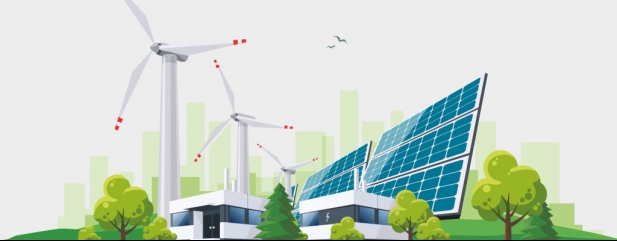Archived article
Please note that tax, investment, pension and ISA rules can change and the information and any views contained in this article may now be inaccurate.
The role of renewables trusts in the energy crisis

One reason why Europe is facing an energy crisis is that renewables power generation fell short of expectations after a summer which was neither sufficiently windy nor sunny.
While this reveals one of the limitations of solar and wind power and has provided a reminder of the continuing role of natural gas, among other traditional sources of energy, it also shows the need for further investment to boost capacity.
If power prices remain elevated, it may affect the assumptions on which the valuation of assets is based which could be a double-edged sword for the sector.
Speaking to Shares, investment director at Octopus Renewables Infrastructure Trust (ORIT) Chris Gaydon says part of the reason the trust has changed its investment policy to target more development-phase assets is to create more ‘impact’.
‘Among the benefits is that it adds to the supply of new renewables generation rather than just recycling capital into existing assets,’ he says. ‘It therefore has significant impact and clearly we need a lot more renewable energy capacity.’
The other, slightly less high-minded reason Octopus is branching out to invest in projects in development is a need to generate higher returns.
Renewables and solar developments which are already onstream, particularly those which enjoy government subsidies, are heavily in demand and therefore expensive.
A planned new listing in London, Blackfinch Renewable European Income Trust is looking to counter the risks associated with overpaying for assets by focusing on ‘less crowded’ markets.
The aim is to raise £300 million to invest in a seed portfolio of Italian and UK assets. The trust is targeting a dividend yield of 6%-plus from the third year after joining the stock market and the targeted shareholder return is 8% a year once fully invested. Longer-term the pipeline encompasses less mature renewables markets such as Italy, Portugal and countries in Central and Eastern Europe.
According to Blackfinch, the total requirements of renewable energy in Europe are currently 609 gigawatts. It is anticipated that between now and 2030, $967 billion will be spent on renewables in Europe. The capacity of solar and wind energy will see an estimated increase of 8,519GW and 6,044GW respectively by 2050.
Another way renewables trusts are seeking to bolster returns is by diversifying the technologies they invest in. Solar power specialist NextEnergy Solar (NESF) recently announced a £100 million joint venture partnership with Eelpower, a battery storage specialist.
The joint venture is targeting the establishment of up to 250 megawatts in projects with £100 million in invested capital and has already signed its first acquisition of a 50MW standalone battery storage project.
NextEnergy became the latest UK-listed solar investor to diversify its portfolio in the last six months after Foresight Solar (FSFL) announced its own battery storage investment and Bluefield Solar (BSIF) moved into batteries and wind.
Another advantage of diversification is that solar tends to perform better in the summer and wind in the winter.
Battery storage exposure might also help during periods, such as the one we’ve just seen when solar and wind assets both underdeliver, as well as helping countries to be better prepared for crises like the one we currently face.
Important information:
These articles are provided by Shares magazine which is published by AJ Bell Media, a part of AJ Bell. Shares is not written by AJ Bell.
Shares is provided for your general information and use and is not a personal recommendation to invest. It is not intended to be relied upon by you in making or not making any investment decisions. The investments referred to in these articles will not be suitable for all investors. If in doubt please seek appropriate independent financial advice.
Investors acting on the information in these articles do so at their own risk and AJ Bell Media and its staff do not accept liability for losses suffered by investors as a result of their investment decisions.
Issue contents
Danni Hewson
Editor's View
Education
Feature
Great Ideas
Investment Trusts
Money Matters
News
- Ford to invest another $7 billion in electric vehicle push
- Energy crisis goes global... but investors in Shell are quids in
- HeiQ shares take a beating after near 70% drop in profit
- New fund to help modernise old fashioned UK companies
- UK investors start to lose faith in ‘transitory’ inflation narrative

 magazine
magazine








